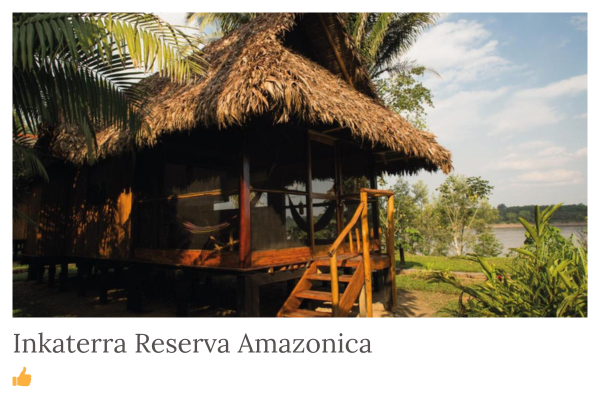
The Amazon basin is a complex ecosystem, unique in the world and special for continuously evolving over millions of years. Characterized by lush vegetation composed of a wide variety of plants and trees, the jungle is inhabited by indigenous populations for at least 10.000 years ago, in conditions of high humidity and heavy tropical rainfalls.
Tips&Tricks: In the Amazonian jungle live millions of species of insects, fish, birds, or large mammals and it is the last place on Earth where harpy eagles, jaguars, and pink dolphins are still found. It occupies half of South America, from the Atlantic Ocean to the Andes, Peruvian Amazon being the richest region in terms of biodiversity.
The jungle can be visited throughout the year, but keep in mind that regardless of the month, the air is very humid and the temperatures are high. Like every other tropical region, the Amazon is known for having only two seasons: a rainy season and a dry season. As the name suggests, the main difference between these two seasons in tropical climates is that in the dry season sometimes it does not rain for months (but that does not mean that there is no precipitation at all).
Where to stay in Tambopata National Park (our favorite choices)
The Rainy vs. Dry Seasons
The Rainy Season (December to May)
Tips&Tricks: We spent a week in the Peruvian Amazon in May, at the end of the rainy season. Given the diverse nature of the region, we divided our time, spending four days in Taricaya Reserve and three days within Tambopata National Park. Despite encountering small challenges accessing certain areas of the jungle, we embraced the experience of trekking through water and mud, as it’s an unique aspect of visiting the tropical rainforest.
During the rainy season, the Amazonian Rainforest receives a significant amount of precipitation, which transform the landscape into a lush paradise adorned with various shades of green. Rivers swell and flood extensive areas of forest, thus creating new networks of waterways that offer perfect opportunities to go on boat tours searching for wildlife on their banks. Moreover, although the humidity level are high, frequent rain showers bring down the temperature, so now you will also be able to comfortable enjoy exploring numerous hiking trails in the jungle.
One of the highlights of visiting the Amazon during the rainy season is the experience of watching different species of birds and animals in their natural habitat. As water levels rise, they seek refuge in the canopy, making wildlife spotting a thrilling bucket-list experience. From loud macaws to rare mammals such as jaguars and river dolphins, the rainy season offers unparalleled opportunities for nature enthusiasts.
Tips&Tricks: Another characteristic of the season is the high humidity in the air that attracts tropical mosquitoes. They represent the biggest threat in the Amazon, and although they are everywhere, their number may depend on the area, time of day, or distance from the nearest river. However, in Taricaya Reserve we did not feel the presence of mosquitoes as aggressive as in the middle of Tambopata National Park where our insect repellent had almost no effect.
The Dry Season (June to November)
Contrary to the rainy season, the dry season in the Amazon is characterized by lower rainfall and clearer skies. As the waters recede, the landscape transforms quite a bit, revealing hidden trails and secluded beaches along the riverbanks.
One of the primary attractions of this season is the ease of hikking. As there are fewer waterlogged areas, trails become accessible, and those who wish to venture into the jungle have the chance to explore greater distances. Also, the vegetation is not as dense during this period so wildlife an be easily observed from a distance. Furthermore, the dry season coincides with the nesting and breeding periods of many bird species in the Amazon, offering unique opportunities for birdwatching enthusiasts.
Choosing the Best Time to Visit
…ultimately depends on your preferences and interests. If you’re drawn to the vibrant greenery and the possibility of meeting numerous wild animals, the rainy season promises you a captivating experience in the middle of nature. On the other hand, if you prefer clear skies, easy hikes and better birdwatching opportunities, then the rainy season might be more to your liking.












